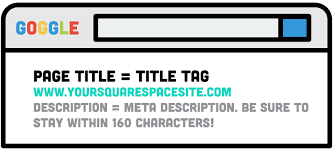SEO Copywriting: How to Write an SEO-Friendly Content?
What is the most valuable thing about a website? Let’s say it right away: The domain that holds it on the web, the page speed that makes it useful, and of course the content that represents it in front of everyone, including search engines. This is exactly why content creation or copywriting is so important for websites. It is very important that the content used reflects the personality of the brand and really appeals to the target audience.
Well, is that all?
Of course no!
There is also an SEO part of this job. Today, we will be reviewing a guide to a very important content production process, also called SEO Copywriting. Is the content you use for your website really SEO compatible? What exactly does SEO-compatible content mean? What is the importance of producing SEO-compatible content and to what extent does such content affect your ranking?
We’ll find answers to all of these questions in our detailed guide today. If you wish, let’s get started right away!
Try for free to boost your website traffic!
What is SEO-Friendly Content Writing or SEO Copywriting?
Have you noticed that websites with a strong ranking in Google have content that targets certain keywords, complies with all technical SEO requirements and functions in a user-oriented manner?

The powerful keywords you use to increase the authority of the content and a strong coverage that increases the relevance of your content make it perfect for sharing on social media and various other platforms.
Researches show that approximately 15.04 percent of Google’s Ranking Algorithm depends on the density of keyword usage within a page. Of course, this doesn’t mean “use as many keywords as possible, scope doesn’t matter.”
The fact that the user who reaches your site in some way and encounters the content does not show the bounce behavior immediately, the duration of the page is as long as possible, the user converts, and many other factors develop directly depending on the quality of the content.
So what does it all depend on? What should be considered when writing SEO-compatible content? In this context, we will talk about UX-oriented optimization studies rather than technical requirements.
Identify Your Target Audience and Try to Know Them
First of all, you need to clearly determine who you are addressing with the content you write for SEO Copywriting. Decide on the way your audience uses Google, the keywords they use in their inquiries, or the style that can persuade them to convert on the internet. In order to catch this style, you can first examine your opponents and take a look at the styles of their contents (take a look at different types of contents differently: landing page contents, type of slogans, blog contents, category, and service contents).

It may also be useful to examine the keywords your competitors focus on and do a “keyword optimization” accordingly. When determining how to shape your style, consider these:
- Your target audience is an audience that expects to have luxurious experiences and are you an e-commerce site?
- Are you a digital marketing agency and appealing to people from within the industry for B2B marketing?
These questions can be diversified according to the industry you are serving in for SEO Copywriting. You can also ask following ones:
- Do you want to create an intimate marketing style, or do you want to create a blog initiative that helps you build loyalty with your customers beyond products or services?
- Are your target audience men or women? Which age range do you appeal to? Which social media platforms do this age range use the most? Which celebrities do they follow?
All of the questions we asked above are extremely important for the content you create to persuade your audience to read and convert. Therefore, you have to determine your audience when you think about your style and the information you will provide.
One Roof, High Authority
Keep all the content you produce on your website belonging to a single domain. For example, if you have previously used a different blog site or have several different projects, never make the mistake of sharing the same content on several different sites.
Google is extremely sensitive to duplicate content, and such content is considered spam. For example, if you want to create a blog page for your website, share the content on the page you will create by adding / blog to the end of your website extension. The contents created according to SEO Copywriting rules will reveal the chance of your website being indexed in certain keywords and increase the authority of the domain.
In addition, linking from the contents on your blog page to each other, sending links to the basic service and category pages and similar technical operations will help you increase the page authorities with each other and have a strengthened sitemap.
Having Catchy H1, H2, H3 Tags
You know that Google attaches great importance to heading tags. First of all, h1 is the tag Googlebots primarily wants to see when crawling your web page. Having this section blank makes it difficult to understand exactly what your content is about: both for search engine bots and users. The titles of your content tagged with h1, h2, h3 tags should be prepared in a keyword-rich, interesting and engaging way.
- But beware! You should avoid Clickbait headers. Although choosing such titles will drive traffic to your site, they will cause Google to make a negative judgment about your site by causing the users coming to your site to bounce in a short time.
- Remember: When users enter your site and exit immediately, it means they couldn’t find what they were looking for.
What To Be Careful About Title Tags?
Let us remind you of a few rules about heading tags for SEO Copywriting:

- A content can only have one h1 tag header.
- Switching to h3 without using the h2 tag in the content may give a message to Googlebots that it is passed without certain information. It may be harmful in terms of indexing or ranking to create such a content structure.
- After using the h2 tag in the content, creating a title with an h3 tag without writing any body paragraph under h2 will have the same effect. It should also be avoided.
- Preferably, after a title, you should not pass directly to the articles or steps. Before that, it is recommended that you make a statement explaining what the articles or steps in question is about.
Use Meta Descriptions
Hey, SEO Copywriting, or telling Google and the users about what your content says is not just about heading tags! When users make a query with certain keywords, Google puts SERPs in front of them. SERPs is an area with organic and sponsored results are presented to the user, ranked according to their relevance and marketing budget. While in SERP, users see snippets of page content: an image consisting of a meta tag, meta description, URL, and structured data if used.

The meta description here is the last weapon that will allow you to persuade users to enter your site, not your competitors. Make sure your meta descriptions also have a keyword-rich, engaging style that includes call-to-action elements.
- Hey, a little warning: Your meta description should not exceed 160 characters.
- One more: Avoid meta descriptions that make for a spammy look and only consist of certain keywords.
Use Plenty of Images, Videos, Gifs and Infographic
Want to learn more about SEO Copywriting? A research shows that blog content, which includes a lot of visual, can offer stronger results in terms of ranking in the long term. Especially according to the surveys conducted by Orbitmedia asking 1279 bloggers, contents in the range of 2000 – 3000 words and supported with 10 or more images mean the strongest results in terms of indexing and ranking.
It may be a great idea to reinforce your content with lots of visual elements. Hey, let us pass a few warnings about the images you use:
- Do not use images protected by copyright on your site without permission.
- Make sure that the file names and alternative description parts of the images are arranged in a relevant way.
- It is very important that the images or videos you use have the right format so that your web page does not load slowly. Remember, content optimization is very important for on-page SEO, but on a site with a lower page speed, the value of the content will be lower. For this, SEO expert recommends using images in JPEG format. You can start using Screpy right away to analyze your site in terms of technical SEO and examine the tasks.
- You should make sure that the images you use are placed on your page in accordance with the mobile view of your site. Mobile-first indexing is a very important concept for us!
Take Care to Share Content Regularly
It is extremely important to write SEO compatible content and publish it on your site. But it will be really valuable to share them in a certain routine. If you do not post regularly, Google will not be able to mark you as up to date.

How so?
Googlebots cares that a website has a strong performance score and SEO Copywriting. At the same time, being keyword-rich and user-oriented shared content is also very important for ranking and indexing.
Okay, we already know these.
But we’re afraid you might understand something:
One of the things that Google cares about most is that it always offers up-to-date content to users. For this, your content should be shared 2 or 3 times a week in a certain routine. It’s not a good idea to post lots of content in one go and not update your site for a long time. Therefore, you can ask the agency you are interviewing to provide editorial services for you in addition to SEO copywriting. Remember, for Googlebots it is important to always show the “most relevant” content to the user. The relevance of a content can be predicted by how up-to-date the site that shares it is. Google does this too, and it tends to highlight constantly updated sites.
Test Your Website Issues
You can quickly analyze your site